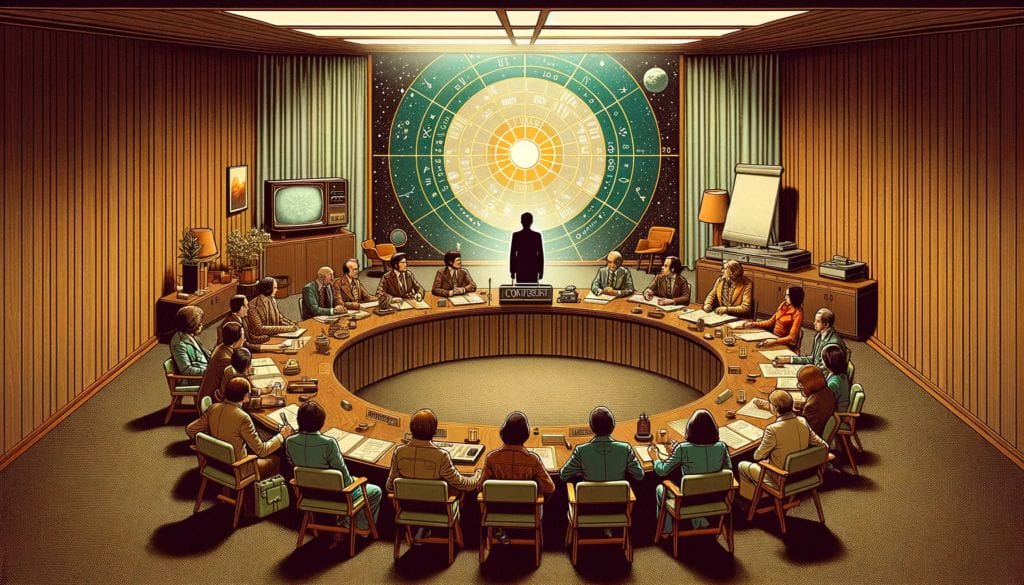Astrosophy Conference 1978

The Essential Questions of Progress and Practice
In 1978, a significant conference on Astrosophy convened, marked by Dr. Unger’s thought-provoking opening: How far has the field of New Star Wisdom progressed, and how should we approach individual horoscopes? These questions not only set the tone but also highlighted the need for introspection and practical application within the field of Astrosophy.
Willi Sucher’s Pivotal Role
Central to the discussions was Willi Sucher’s work, acknowledged as the cornerstone of research in Astrosophy. Sucher’s contributions, distinguished by their depth and volume, played a pivotal role in shaping the conference’s direction. The attendees scrutinized the body of knowledge that had been amassed to gauge the progress made in the field.
Diverging Views on Heliocentric and Geocentric Models
The conference saw a deep dive into two contrasting worldviews: the Heliocentric (Sun-centered) and Geocentric (Earth-centered) perspectives. While the Heliocentric approach, despite its alignment with Rudolf Steiner’s indications, raised questions and concerns about its alignment with Spiritual Science, the Geocentric model found broader acceptance. This model, firmly rooted in the teachings of Steiner and Dr. Elisabeth Vreede and practically implemented by Sucher, was seen as directly applicable to various disciplines like Eurythmy, Medicine, and Anthroposophical Cosmology.
Defining Astrosophy
One of the key discussion points was the definition of ‘Astrosophy’ itself. Drawing from Steiner’s “Pastoral Medicine” lectures, Astrosophy was positioned as a stage of direct contact with spiritual beings, a pinnacle of spiritual initiation. Dr. Unger proposed the term “New Star Wisdom” for more everyday use, given the profound implications and seriousness attached to ‘Astrosophy’.
Ethical Considerations in Astrosophical Practice
The conference firmly addressed the ethical dimensions of working with individual astrological charts. There was a consensus that such work should not commercialize Astrosophy, echoing Steiner’s caution against the potential karmic interference when delving into another’s astrological aspects. Collaboration with professionals like physicians and educators was encouraged for creating asterograms, ensuring a responsible and holistic approach.
Heliocentric Approaches in Medical Collaboration
An intriguing aspect of the conference was the discussion of heliocentric charts, particularly those created in collaboration with medical practitioners. These charts, applied to various conditions including Down Syndrome, revealed significant astrological aspects when viewed from a heliocentric perspective. This finding underscored the potential of Astrosophy in broader therapeutic contexts.
Conclusion
The 1978 Astrosophy Conference was a landmark event that not only assessed the progress in the field but also critically examined its practices and ethical considerations. It reinforced the importance of collaborative approaches and highlighted the need for continued exploration and understanding in Astrosophy, keeping in mind the profound impact such work can have on individuals and society.